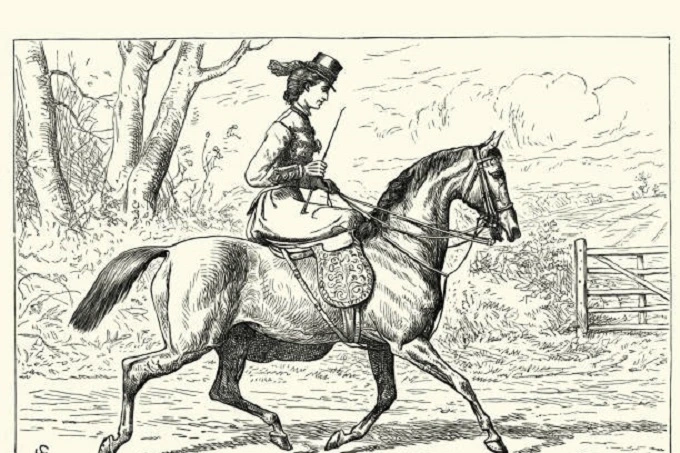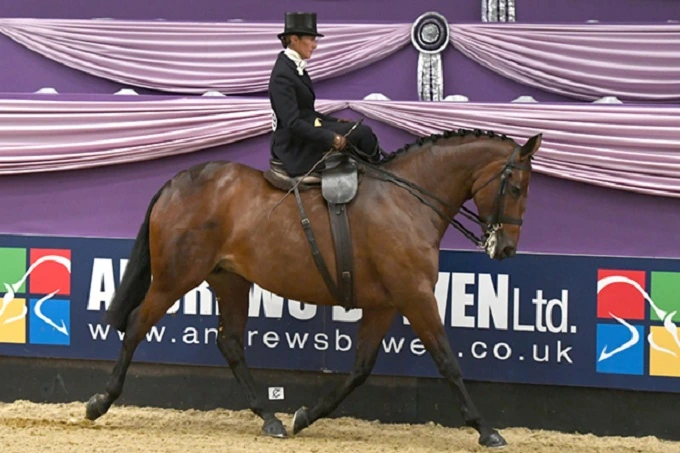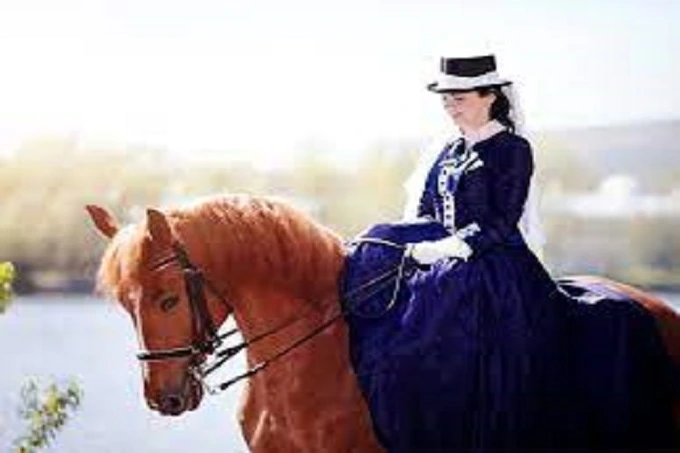Sidesaddle: why did ladies ride their horses sidesaddle?

Many people living in today’s world were likely aware that the women of the noble classes could only ride a horse in the sidesaddle in the ancient days. At the same time, everyone was really curious about the reason for such a highly particular way of staying still in the saddle. It should come as no surprise that the standard riding posture, which is the one that men have always used and which has been used throughout history, is better and more comfortable. They were making fun of the girls; wasn’t that their intention?
In practical terms, the solution to this dilemma is not difficult to understand. A particular saddle holds the key to unlocking the “feminine” riding style that has been popular in recent years. It varies from the typical “male” one in that it has two protruding “horns” on the left side, which are specific bows required to toss legs on them.
This is how it differentiates itself from the typical male one. The earliest sidesaddle looked nothing like the saddles that were in use in the 19th century. For instance, the earliest saddles designed specifically for women had additional steps that made it easier for riders to mount a horse. After that, they were left to fend for themselves.

It is difficult to pinpoint the exact year when women’s saddles were first made available. It is a well-established fact that they were already in existence in the 14th century. Particularly notable is the fact that Anna of Bohemia, who was married to Richard II, had such a sidesaddle. We have every reason to believe that in the actual world, saddles of this kind had been there for at least a century before this momentous occasion and maybe much longer.
A second question, which is far more important, is why it is needed. You will need to absorb yourself in the wondrous world of the Middle Ages if you will have any hope of truly understanding the question. However, we shall begin with the end of the ancient world.
Riding a horse, especially when women are riding on a sidesaddle, particularly stirrups, is a physically demanding exercise. Everyone who has ever ridden at least once on a saddle for a very long period has experienced the discomfort of chafing. Don’t have any faith? It would help if you gave sidesaddle a go on your own or rode a mountain bike for a couple of hours. Because of the most recent fifth point, it will continue to pain for the next three days.
The saddle can heal wounds as severe as bloody blisters on the buttocks, even while wearing protective gear. And a good number of you have probably already figured out the core of the issue.

In no way, shape, or form do the physical characteristics of males and females differ. Perineum worn into the blood can equally undermine both male and female health. It’s all about the clothes. Not only did the Huns bring stirrups with them when they moved to Europe
These two factors were the driving forces behind the evolution of both the fashion industry and the state of military affairs in Europe for many centuries to come. The creation of a heavy knightly cavalry would be unthinkable if stirrups and stockings were not available.
In the end, everything came down to the fact that stockings were one of the primary markers of masculinity. This fact cannot be overstated. It was possible to tell a nobleman who was battling in the saddle from a peasant laboring in the field and a nobleman whose business was war from a noble lady whose business was reproduction based on the stockings they wore.
Sidesaddle in the middle ages
At the start of the Middle Ages, all of this was piled on top of the gradual disintegration of the tribal system that had existed among the “barbarian” peoples of Europe and the visitors who came from Asia. Because of this, the conventional concept of a man as a hunter and a warrior and a woman as a parent and keeper of the hearth has been firmly embedded in the culture of European countries for a very long time.

Dressing a woman in stockings in the Middle Ages was as strange and wild for people of that time as today, dressing a man in a lady’s dress. And this went on for many centuries. However, noble ladies very often had to accompany their husbands. And since the horse was essentially a “furry car,” a special saddle had to be made that would allow beautiful ladies to ride without stockings and in long dresses.
Only in the 20th century did everything start to change. There were some real feminists here who defended the rights of the beautiful half of humanity. It is important to keep in mind that, in comparison to today, the status of women in the 19th and early 20th centuries was oppressed in terms of the rights and liberties they had. The ultimate breakdown of conventional boundaries was hastened by the rise of urban culture and the two world wars that occurred between them. When women were finally granted permission to wear stockings, it was discovered that they could successfully use the traditional “male” saddle instead of a sidesaddle.




